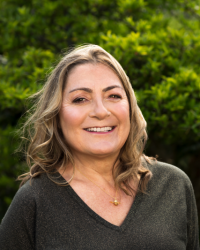How I reversed osteoporosis and took control of my health
Osteoporosis is a condition that weakens bones, making them fragile and more likely to break. You are at greater risk of developing osteoporosis or the stage before, which is called osteopenia, post menopause when oestrogen levels (which are protective of bone) are low.

Other than menopause, there are several factors that increase your risk of developing osteoporosis including smoking, high alcohol consumption, a very low body mass index and eating disorders such as bulimia and anorexia nervosa.
Osteoporosis is diagnosed via a bone density scan (DEXA), which measures your bone strength and is a short, painless procedure that takes 10 to 20 minutes. It compares your bone density with that of a healthy young adult and calculates the difference as a standard deviation (SD), which is called a T-score. A T-score of above -1 is normal, between -1 and -2.5 shows bone loss and is defined as osteopenia and below -2.5 is defined as osteoporosis.
When I was diagnosed with osteoporosis in 2021 I was quite shocked because other than menopause, none of the extra risk factors applied to me. I thought that I had been eating healthily and exercising for years.
The GP advised me to take calcium and vitamin D supplements, even though my blood tests showed that I wasn’t deficient in either nutrient, so I knew that there must be wider factors of importance. There is medication available for osteoporosis, however, I declined to take this because I didn’t like the look of the side effects and wanted to try nutrition and lifestyle factors first.
After researching what I could do, I discovered that it was important to eat enough protein every day and at every meal. In mid-life we need a minimum of 1g per kg of body weight and ideally 1.2g if you do a lot of strenuous exercise.
It is also important not to overdo the calcium and to ensure that you take into account how much you are getting from your diet. There is a great online calculator from The Osteoporosis Society that you can use to check your intake.
Plus there are two other key nutrients that are vital for strong, healthy bones. Both magnesium and Vitamin K2 play an important role in ensuring that the calcium actually gets to your bones rather than just into your body’s tissues and arteries (which is damaging and can lead to cardiovascular disease).
In addition, weight-bearing exercises signal to your bones that they need to keep re-building and stay strong. Bones are not inert, they are living tissue!
I also discovered that your gut microbes and immune system both have a role to play in healthy bones. This means that eating a diet rich in lots of different types and colours of vegetables and low-sugar fruits that feed your gut microbes with vital fibre can make a difference too.
After 18 months of switching my exercise programme to two to three sessions a week of weight training and increasing my protein and vegetable intake, plus switching my vitamin D supplement to one that included vitamin K2, I went for a private DEXA scan to monitor my progress, so I could see whether my plan of action was making a difference.
18 months is not a long time in bone health terms, but I wanted to know whether what I was doing was making a difference. I was delighted to find out that my lumbar spine T-score had improved slightly from -3.5 to -3.2. My 10-year fracture risk had reduced from 12% to 8% and so I had confirmation that what I was doing was making a difference. I was on track to reverse my osteoporosis.

Find a nutritionist dealing with Osteoporosis
All nutrition professionals are verified



